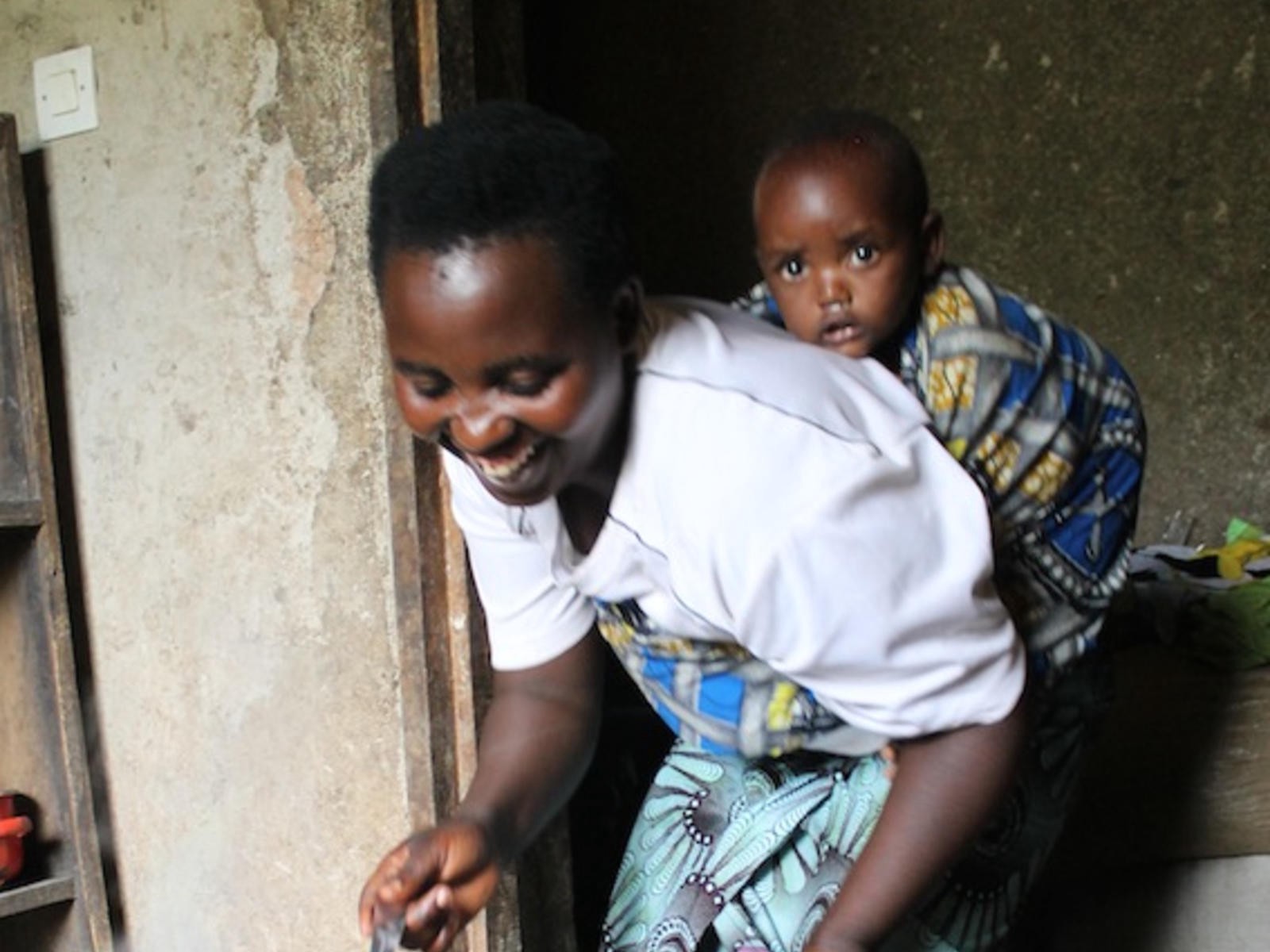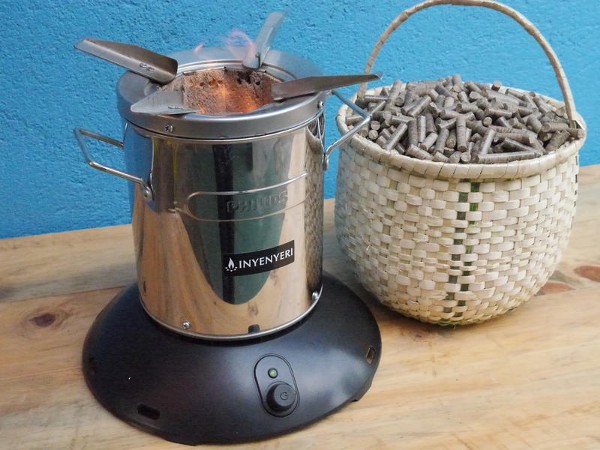

Cooking can be dangerous. According to the World Health Organization, 4.3 million people die because of air pollution caused by cooking fires each year, and that’s before you consider the deforestation and carbon emissions they fuel.
Eric Reynolds, founder and CEO of Inyenyeri, a clean cookstove social enterprise in the small East African nation of Rwanda, promises a stove that burns without smoke. Moreover, he also assures that eventually the stove could be used to sequester carbon, making Rwanda the world’s first carbon-negative country.
The cookstove burns biomass pellets, which Inyenyeri manufactures from scrap wood and other dry organic material. A solar-powered fan ensures a constant flow of oxygen to the fire to keep it burning hot, allowing it to reach very high temperatures that prompt a chemical conversion from solid to gaseous fuel–which is a lot cleaner. This results in a 95 percent reduction in emissions and up to 80 percent fuel savings in comparison to traditional fires. When used properly, the stove is almost totally smokeless.
It also produces a carbon-rich, charcoal-like byproduct known as bio-char. Here’s where the promise to be carbon-negative comes in. Currently, the stoves burn through the bio-char phase to maximize fuel efficiency. But if bio-char was removed from the chamber and instead put back into the earth–in the form of fertilizer, for example–families across Rwanda could start sequestering carbon, helping not just to assuage but actually reverse the effects of climate change.

Such innovative technologies require equally innovative distribution models. Reynolds and his team have devised a highly ambitious business plan in the hopes of converting Rwandans to clean, gasification stoves.
“NGOs don’t ever work,” Reynolds said bluntly. “The best solutions are market-based solutions.”
At upwards of $75 a unit, the stoves price-out most Rwandans. So they are leased to rural households on the condition that users deliver dry organic material to designated collection hubs, which Inyenyeri can then turn into biomass pellets. Urban households, which can’t collect such organic material in the same way, lease the stove for $7 a year, signing a contract promising to purchase Inyenyeri’s pellets, which are sold at a rate below that of charcoal. It’s a way around the hurdle of the $75 price tag but not a solution everyone agrees with.
“Market-based solutions are generally going to leave out the poorest of the poor,” argued Christina Barstow, senior program manager at Del Agua, another clean cookstove company in Rwanda that takes a much different approach. “There are examples of free distribution projects, like (mosquito) nets and vaccinations that are more effective than market-based solutions.”
Del Agua has partnered with the Ministry of Health to give away free stoves and water filters to half a million of the poorest families in Rwanda. The wood-burning rocket stove they distribute is not as clean as Inyenyeri’s, but it still uses 50″”70 percent less wood than traditional cooking fires.
While it can’t boast of bringing about carbon-negative futures, Del Agua believes that effective innovation happens one step at a time.
“Behavior change is a huge issue,” explained Barstow. “To introduce a new technology and a new fuel source at the same time is an extremely difficult task, and one of the main reasons we chose a wood-burning stove.”
Still, Reynolds maintains that a market-ruled, carbon-negative reality for Rwanda is within reach, and his excitement is palatable. It’s too soon to say if Inyenyeri’s bold attempt to single-handedly transform the energy sector in the country will work, and there are still questions over whether it’s the best direction to take. What is clear, however, is that clean cooking alternatives are long overdue.


How We Get To Next was a magazine that explored the future of science, technology, and culture from 2014 to 2019. This article is part of our Power Up section, which looks at the future of electricity and energy. Click the logo to read more.
